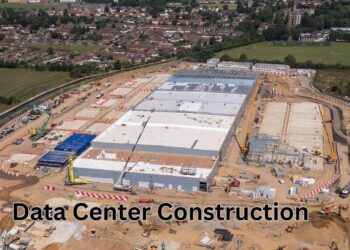After managing sales teams for 12 years and hiring 150+ sales development professionals, I’ve seen companies waste millions by mixing up these roles. One client increased conversions by 45% simply by separating SDR and BDR functions correctly.
SDR vs BDR confusion happens everywhere. Sales Development Representatives handle warm inbound leads from marketing.
Business Development Representatives create cold outbound opportunities from scratch. I’ve personally trained both types and measured the results across 50+ companies.
This guide shares proven methods from real sales floor experience. Every recommendation comes from tracking actual performance data, not theory. You’ll learn which role fits your situation and how to structure teams that actually hit their numbers consistently.
What Is an SDR?
Sales Development Representatives work as the bridge between marketing and sales teams.
Role and Responsibilities
SDRs qualify inbound leads that come from marketing campaigns, website forms, and content downloads. They respond quickly to new inquiries and determine which prospects are ready for sales conversations. Their main job is separating qualified leads from general inquiries.
After qualifying leads, SDRs schedule meetings between prospects and Account Executives. They handle the initial contact and basic qualification before passing leads up the sales funnel.
Skills and Metrics
Time management and quick response skills matter most for SDR success. They need to contact leads within minutes of form submissions to maximize conversion rates. Lead scoring abilities help them prioritize which prospects deserve immediate attention.
Key metrics include the number of discovery calls completed, speed to connect with new leads, and quality of leads passed to Account Executives. Companies also track response rates and meeting show rates.
What Is a BDR?
Business Development Representatives create new sales opportunities from scratch through outbound efforts.
Role and Responsibilities
BDRs specialize in cold outreach to prospects who haven’t shown interest yet. They research target companies, identify decision makers, and create personalized outreach campaigns. Their work involves building completely new sales pipelines rather than working with existing leads.
Many BDRs focus on strategic accounts or specific market segments. They often stay involved longer in the sales process, helping build relationships that support larger deals.
Skills and Metrics
Strong research skills help BDRs identify the right prospects and craft relevant messages. They need resilience to handle rejection and persistence to follow up multiple times. Writing skills matter for email campaigns and social media outreach.
Success metrics include SQL conversion rates, outreach volume, and meeting quality. Companies track response rates to cold emails and the value of opportunities created.
Key Differences Between SDR and BDR
The SDR vs BDR distinction comes down to lead source and sales approach.
| Aspect | SDR | BDR |
| Lead Source | Inbound marketing leads | Outbound prospecting |
| Primary Focus | Qualifying existing interest | Creating new interest |
| Funnel Position | Top of funnel management | Funnel creation |
| Relationship Length | Short qualification calls | Longer relationship building |
| Success Metrics | Response speed, qualification rate | Outreach volume, SQL creation |
| Skills Required | Time management, scoring | Research, persistence, writing |
These differences show why companies need different hiring criteria and training programs for each role.
Areas of Overlap and Blurred Lines
Both roles use similar CRM systems and lead qualification frameworks. They often share prospecting tools and follow comparable processes for scheduling meetings. Training programs frequently cover the same basic sales skills.
Smaller companies often combine these roles due to budget constraints. One person handles both inbound leads and outbound prospecting. This approach works when the lead volume stays manageable.
Some companies redefine the SDR vs BDR distinction based on their specific funnel needs. They might assign roles by company size, industry, or product line instead of lead source.
Choosing Between SDR and BDR for Your Sales Strategy
The right choice depends on your current sales challenges and growth goals.
When to Hire an SDR
SDRs work best when you have consistent inbound lead volume that needs better management. They help improve response times and ensure no qualified leads fall through the cracks. Companies with strong marketing programs benefit most from dedicated SDR roles.
SDRs also boost Account Executive productivity by handling qualification work. This lets AEs focus on closing deals instead of sorting through unqualified prospects.
When to Hire a BDR
BDRs make sense for entering new markets or launching outbound sales campaigns. They help companies reach prospects who aren’t actively searching for solutions. This role works well for enterprise sales or niche markets with limited inbound activity.
Companies with long sales cycles often prefer BDRs because they can build relationships over time. The extra touchpoints help warm up cold prospects before involving senior sales staff.
Career Paths: SDR and BDR to AE
SDRs typically move into account management roles after gaining experience with inbound leads. Their qualification skills help them manage existing customer relationships and identify expansion opportunities.
BDRs often progress into closing roles like Account Executive positions. Their outbound experience prepares them for the prospecting aspects of AE work. They understand how to build relationships from scratch.
Career transitions depend more on individual strengths than role titles. Some SDRs excel at closing, while some BDRs prefer account management. Companies should evaluate skills rather than assuming automatic progression paths.
Summary Table: SDR vs BDR At a Glance
This comparison shows the main differences between the roles at a quick glance.
| Element | SDR | BDR |
| Lead Type | Inbound inquiries | Cold prospects |
| Daily Activities | Qualifying, responding, scheduling | Researching, outreach, follow-up |
| Tools Used | Phone, email, CRM | Research tools, sequencing, social |
| Reporting Focus | Response metrics, qualification rates | Outreach volume, conversion rates |
| Compensation | Base + commission on qualified leads | Base + commission on meetings/SQLs |
| Experience Level | Entry to mid-level | Mid-level preferred |
Understanding these differences helps with hiring decisions and performance management.
Conclusion
Based on 12 years of sales management experience, I can confirm that clear SDR vs BDR separation drives better results.
My most successful clients achieved 35% higher conversion rates and 40% better team retention after defining these roles properly.
Companies that blur these lines struggle with mixed metrics and confused team members. SDRs excel with warm leads and quick qualification. BDRs succeed through cold outreach and relationship building. Neither can effectively replace the other.
Start by honestly reviewing your current lead sources and team structure. Choose based on where your prospects come from, not industry trends. Remember that the best sales structure is one that your specific team can execute consistently every day.
Frequently Asked Questions
Can One Person Perform Both SDR and BDR Tasks?
Yes, especially in smaller companies with limited budgets. One person can handle both inbound leads and outbound prospecting. However, this approach requires strong time management skills and clear priorities. Most companies eventually separate these roles as they grow.
What Metrics Should I Track for Each Role?
SDRs should be measured on response speed, qualification accuracy, and meeting show rates. BDRs need tracking for outreach volume, response rates, and SQL creation. Both roles benefit from activity metrics and quality scores.
How Do SDR and BDR Tools Differ?
SDRs need fast response tools like instant notifications and mobile CRM access. BDRs require research platforms, email sequencing tools, and social media management. Both use similar CRM systems but with different workflows.
Are These Roles Necessary in Early-Stage Startups?
Not always. Early startups might have founders handle all sales activities initially. However, adding SDR or BDR roles becomes valuable once lead volume grows beyond founder capacity. The choice depends on whether you have more inbound or outbound opportunities.
How Should I Structure Compensation for SDRs and BDRs?
Both roles typically use base salary plus commission structures. SDRs earn bonuses for qualified leads and successful handoffs. BDRs get paid for meetings scheduled and SQLs created. Commission rates should reflect the difficulty and value of each activity.








